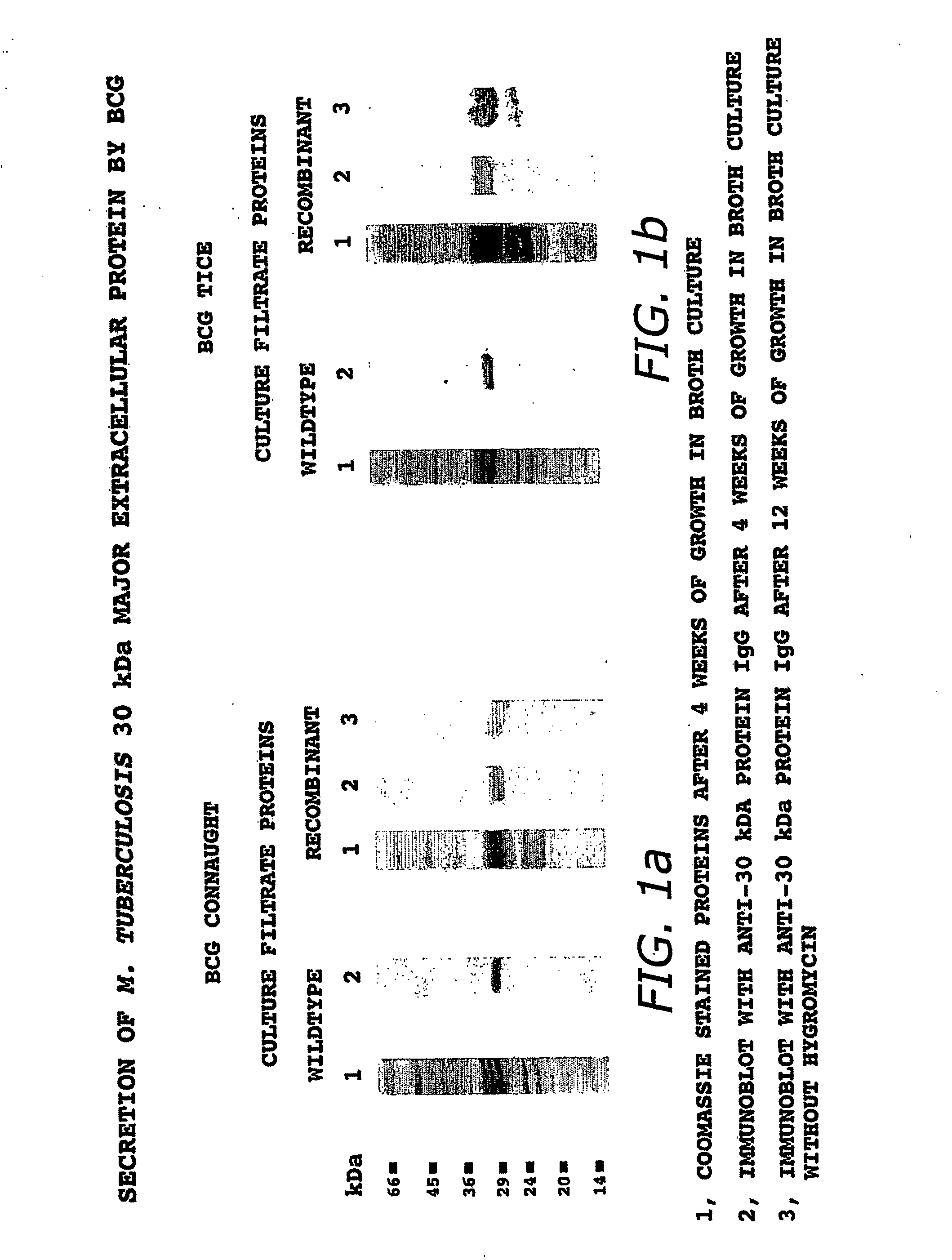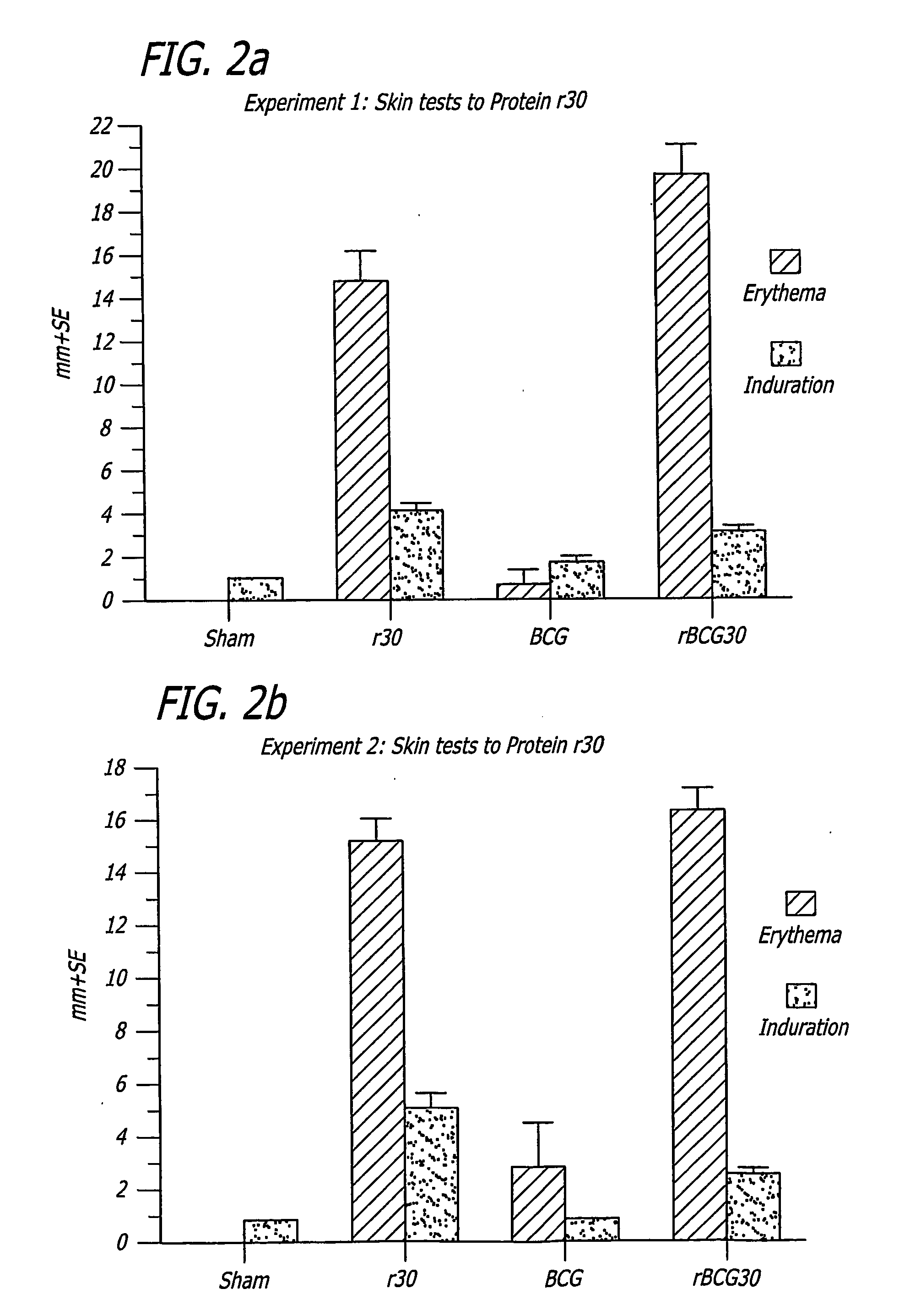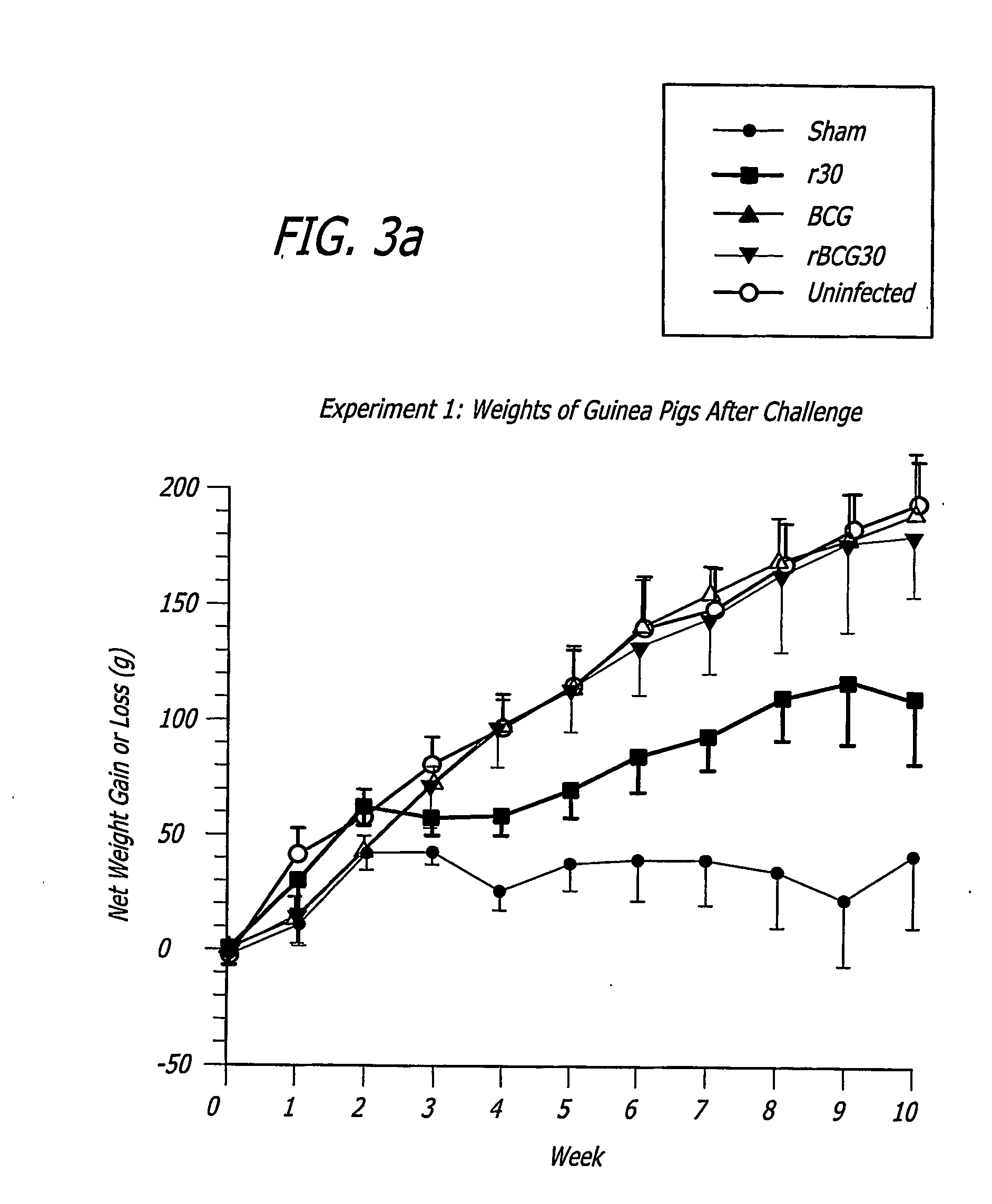Recombinant intracellular pathogen immunogenic compositions and methods for use
a technology of immunogenic compositions and intracellular pathogens, which is applied in the direction of antibacterial agents, biocide, antibacterial medical ingredients, etc., can solve the problems of limiting the universal effectiveness of therapeutic measures, affecting the immune system, so as to improve the immunogenicity and protective effect, and enhance the protective effect of mycobacterium
- Summary
- Abstract
- Description
- Claims
- Application Information
AI Technical Summary
Benefits of technology
Problems solved by technology
Method used
Image
Examples
example 1
[0250] The immunization inocula made in accordance with the teachings of the present invention-were prepared from aliquots removed from logarithmically growing wild-type or recombinant BCG cultures (the “bacteria”). Each aliquot of bacteria was pelleted by centrifugation at 3,500×g for 15 min and then washed with 1× phosphate buffered saline (1×PBS, 50 mM sodium phosphate pH 7,150 mM sodium chloride). The immunization inoculums were then resuspended to a final concentration of 1 ×104 colony forming units (CFU) per mL in 1×PBS and contained 1,000 viable bacteria per 100 μL.
[0251] Specific-pathogen free 250-300 g outbred male Hartley strain guinea pigs from Charles River Breeding Laboratories, in groups of 9, were immunized intradermally with one of the following: 1) BCG Connaught (103 CFU) one time only (time 0 weeks); 2) rBCG30 Connaught (103 CFU) one time only (time 0 weeks); 3) purified recombinant M. tuberculosis 30 kDa major extracellular non-fusion protein (r30), 100 μg in 100...
example 2
[0260] In this experiment, specific-pathogen free 250-300 g outbred male Hartley strain guinea pigs from Charles River Breeding Laboratories, in groups of 9, were immunized intradermally with 103 CFU of one of the following strains: [0261] Group A: BCG Tice Parental Control [0262] Group B:: rBCG30 Tice I (pMTB30) [0263] Group C: rBCG30 Tice II (pNBV1-PgInA1-MTB30) [0264] Group D: rBCG23.5 Tice I (pNBV1-PgInA1-MTB23.5) [0265] Group E: rBCG30 / 23.5 Tice I (pNBV1-PgInA1-MTB30 / 23.5) [0266] Group F: rBCG30 Tice II (pNBV1-PgInA1-MTB30) and rBCG23.5 Tice I (pNBV1-PgInA1-MTB23.5) (5×102 of each strain).
[0267] In addition, 18 animals were sham immunized with buffer only as follows: Group G: 12 sham animals (for subsequent challenge only) and Group H: 6 sham animals (for skin testing only).
[0268] Nine weeks after immunization, 9 guinea pigs in each Group A-F above and the 6 animals in the sham Group H were shaved over the back and injected intradermally with 10 μg of purified recombinant M. ...
example 3
[0273] In this experiment, specific-pathogen free 250-300 g outbred male Hartley strain guinea pigs from Charles River Breeding Laboratories, in groups of 6, were immunized intradermally with 103 CFU of one of the following strains: [0274] Group I: BCG Tice Parental Control [0275] Group J: rBCG30 Tice I (pMTB30) [0276] Group K: rBCG30 Tice III (pNBV1-MTB30) [0277] Group L: rBCG23.5 Tice II (pNBV1-pMTB23.5) [0278] Group M: rBCG30 / 23.5 Tice IIA (pNBV1-MTB30 / 23.5⇑⇑) [0279] Group N: rBCG30 / 23.5 Tice IIB (pNBV1- MTB30 / 23.5⇑⇓) [0280] Group O: rBCG32A Tice I (pNBV1-MTB32A). [0281] Group P: Sham immunized with buffer only (six animals).
[0282] Nine weeks after immunization, guinea pigs in Groups I-P above were shaved over the back. Animals immunized with a strain expressing r30 (Groups I, J, K, M, and N) and the 6 sham immunized animals in Group P were injected intradermally with 10 μg of purified recombinant M. tuberculosis 30 kDa major extracellular protein (r30) in 100 μL phosphate buffe...
PUM
| Property | Measurement | Unit |
|---|---|---|
| pH | aaaaa | aaaaa |
| concentrations | aaaaa | aaaaa |
| concentrations | aaaaa | aaaaa |
Abstract
Description
Claims
Application Information
 Login to View More
Login to View More - R&D
- Intellectual Property
- Life Sciences
- Materials
- Tech Scout
- Unparalleled Data Quality
- Higher Quality Content
- 60% Fewer Hallucinations
Browse by: Latest US Patents, China's latest patents, Technical Efficacy Thesaurus, Application Domain, Technology Topic, Popular Technical Reports.
© 2025 PatSnap. All rights reserved.Legal|Privacy policy|Modern Slavery Act Transparency Statement|Sitemap|About US| Contact US: help@patsnap.com



